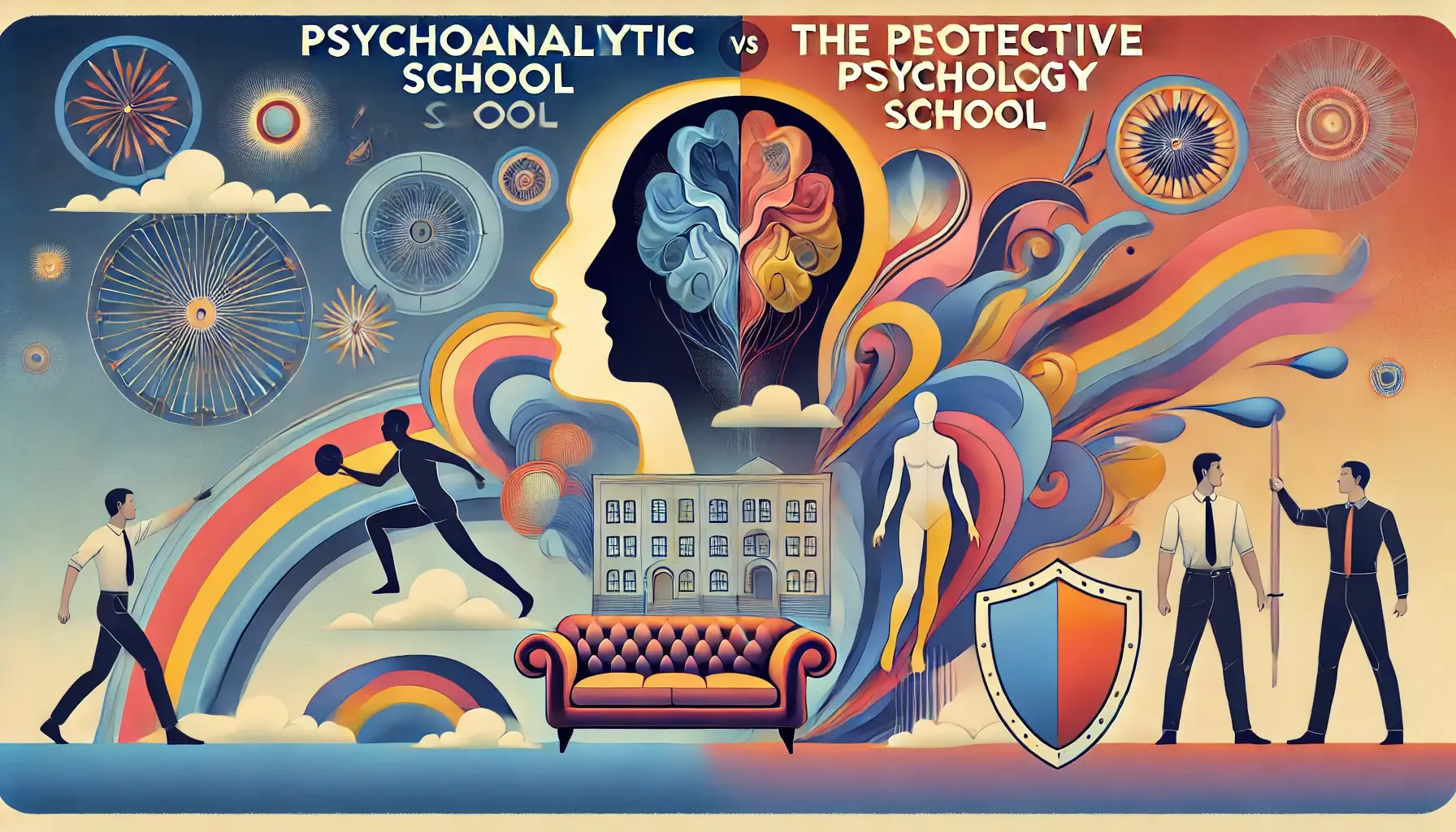Criminology, as a multidisciplinary field, relies heavily on psychological theories to interpret and address criminal behavior. Among the influential psychological schools that have shaped criminology are the Psychoanalytic School and the Protective Psychology School. These schools differ in their focus and methodology but share a common goal: understanding and mitigating criminal behavior. This article explores the core principles, contributions, and interconnections of these two schools, offering insights into their roles in criminology.
The Psychoanalytic School
The Psychoanalytic School, founded by Sigmund Freud, offers a deep, introspective approach to understanding criminal behavior. Freud’s theories, rooted in the exploration of the unconscious mind, provide a framework for interpreting the psychological underpinnings of deviant actions.
1. Core Principles
The Psychoanalytic School is based on Freud’s structural model of the psyche, which consists of:
- The Id: The primal, instinctual part of the mind, driven by pleasure and immediate gratification.
- The Ego: The rational part that mediates between the id and external reality.
- The Superego: The moral conscience, shaped by societal norms and values.
Criminal behavior, according to Freud, often arises from conflicts among these components. For instance, an overactive id may overpower the superego, leading to impulsive, unlawful acts.
2. Freudian Theories in Criminology
Freud’s theories have been applied to criminology in various ways:
- Unconscious Desires: Criminal acts may be expressions of repressed desires or unresolved psychological conflicts.
- Childhood Experiences: Adverse experiences during early development, such as neglect or abuse, can result in maladaptive behaviors later in life.
- Defense Mechanisms: Criminal behavior may serve as a coping mechanism for internal anxieties or frustrations.
3. Applications in Criminal Profiling
Psychoanalytic theories have influenced criminal profiling by emphasizing the importance of:
- Analyzing offenders’ childhood histories.
- Identifying subconscious motives behind crimes.
- Understanding the emotional triggers that lead to criminal acts.
4. Criticism of the Psychoanalytic School
While the Psychoanalytic School has provided valuable insights, it faces criticism for its:
- Lack of empirical evidence to support its claims.
- Overemphasis on internal psychological factors, often neglecting environmental influences.
- Subjective interpretation of unconscious motives, which can vary between analysts.
Despite these critiques, the Psychoanalytic School remains a cornerstone in understanding the psychological dimensions of crime.

The Protective Psychology School
In contrast to the introspective approach of the Psychoanalytic School, the Protective Psychology School focuses on prevention and intervention. This school emphasizes practical strategies to identify and mitigate risk factors associated with criminal behavior.
1. Core Principles
The Protective Psychology School is grounded in:
- Risk Assessment: Identifying psychological, social, and environmental factors that increase the likelihood of criminal behavior.
- Preventive Interventions: Implementing measures to reduce risks and promote positive development.
- Rehabilitation: Designing programs to help offenders reintegrate into society and avoid recidivism.
2. Psychological Interventions
The Protective Psychology School employs various interventions, including:
- Cognitive-Behavioral Therapy (CBT): Aims to restructure distorted thought patterns and teach adaptive coping mechanisms.
- Anger Management Programs: Focus on helping individuals regulate emotions and handle conflicts constructively.
- Trauma-Informed Care: Addresses the impact of adverse childhood experiences (ACEs) on criminal behavior.
3. Role of Environmental Factors
This school recognizes the significance of external influences, such as:
- Family Dynamics: Dysfunctional family environments can contribute to criminal tendencies, whereas supportive families act as protective factors.
- Educational Systems: Schools play a crucial role in teaching empathy, problem-solving, and conflict resolution skills.
- Community Programs: Initiatives like mentorship and recreational activities provide positive alternatives to criminal behavior.
4. Applications in Modern Criminology
The Protective Psychology School has influenced various aspects of modern criminology, such as:
- Juvenile Delinquency Prevention: Programs targeting at-risk youth to prevent early involvement in crime.
- Rehabilitation Programs: Tailored interventions for offenders, focusing on skill development and emotional regulation.
- Collaboration with Law Enforcement: Training officers to recognize psychological distress and de-escalate situations effectively.
Comparing the Two Schools
While the Psychoanalytic and Protective Psychology Schools differ in their approaches, they are complementary in addressing criminal behavior.
1. Focus Areas
- The Psychoanalytic School delves into the unconscious mind, exploring deep-seated psychological conflicts.
- The Protective Psychology School prioritizes practical interventions and environmental influences to prevent crime.
2. Methods and Applications
- Psychoanalytic methods, such as psychoanalysis, focus on long-term exploration of individual psyches.
- Protective psychology methods, such as CBT and community programs, emphasize immediate, actionable solutions.
3. Integration in Criminology
- A holistic approach to criminology can integrate insights from both schools, addressing both the root psychological causes and the external risk factors of criminal behavior.

Criticism and Future Directions
Both schools have their limitations:
- The Psychoanalytic School has been criticized for its reliance on subjective interpretations and lack of empirical validation.
- The Protective Psychology School faces challenges in resource allocation and ensuring accessibility to preventive programs.
Future directions in criminology involve integrating technology, such as artificial intelligence and big data analytics, to:
- Enhance risk assessment accuracy.
- Tailor interventions to individual needs.
- Monitor the effectiveness of preventive and rehabilitative programs.
Conclusion
The Psychoanalytic School and the Protective Psychology School offer valuable perspectives on understanding and addressing criminal behavior. By combining the introspective depth of psychoanalysis with the practical focus of protective psychology, criminologists can develop comprehensive strategies to prevent and mitigate crime. As the field evolves, integrating these schools with modern technologies and interdisciplinary approaches promises to enhance our understanding of criminal behavior and improve societal safety.

